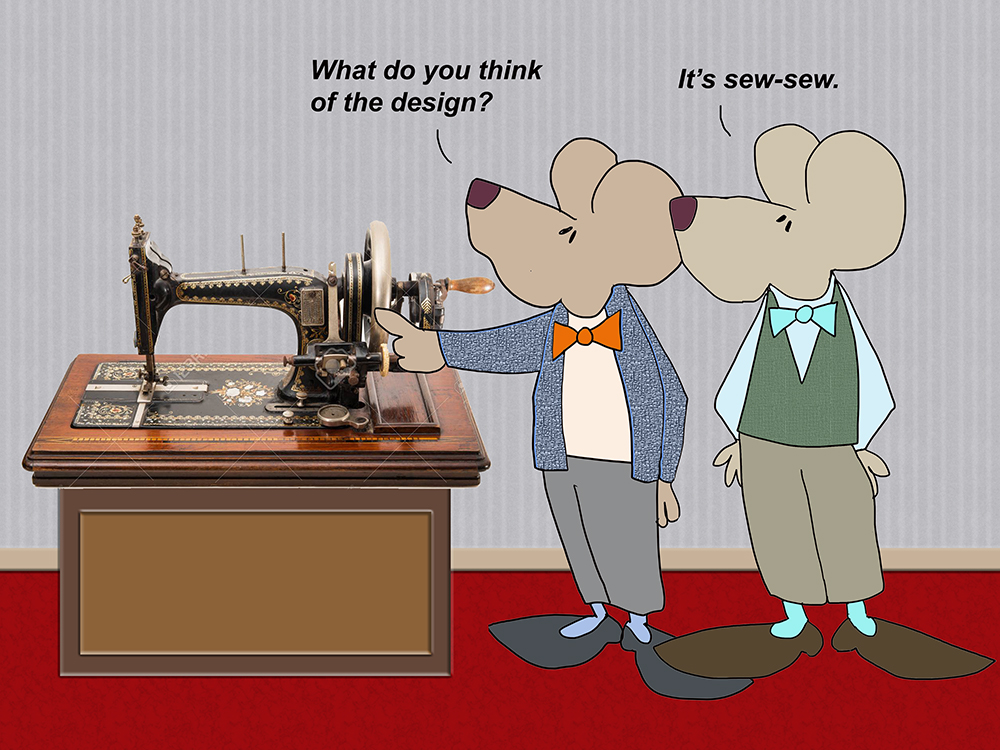This day, July 9, is a special one to me. It is the day that my dad was born, in 1922. He is long gone from this world now, but certainly not forgotten. He has visited my dreams at least three times this week.
I find it terribly interesting that today is also the birthday of Elias Howe Jr. He is the “inventor of the sewing machine.” I wonder if my mom and dad knew of this little tidbit while they were living. You see, my mom loved, loved, loved to sew. And she did sew (so) on her machine.
Howe’s life is incredibly interesting. He was born in Spencer, Massachusetts, in 1819. In his young life, he worked in a few different factories. A textile plant, to begin with, then on to being a mechanic with carding machinery, and later with chronometers (precision timekeepers). It was while working there that he somehow got his bright idea for a sewing machine.
Lots of people were coming up with inventions for them at the time, as early as 1790. Different schematics. Some had even patented their designs and produced working machines. In one case at least 80 of them. But, it was in 1846 when Howe came up with his sure-fire machine. Three keys to his design were a shuttle operating beneath the cloth to form the lock stitch, an automatic feed, and — the best detail — the eye of the needle in the point of that needle.
This idea, the thing that topped it off, came to him in a dream. Up to that point, he had been pounding his head on the wall, trying to find his solution. But one night as he slept, he dreamt that he was designing a sewing machine for some horrible king in some strange country. Just as in his actual design problem, he was perplexed about the needle’s eye. The king gave him one day in which to complete the machine and make it sew. If not finished in that time death was to be the punishment. Still dreaming, Howe worked and worked, and puzzled, and finally gave it up. With his epic fail, he was on his way to be executed. He noticed that the guards carried spears that were pierced at the head. The solution came immediately for putting the eye in the point of the needle. He woke up at four in the morning, jumped out of bed, ran to his workshop, and by nine o’clock, a needle with an eye at the point had been rudely modeled.
As with a lot of other “patent” stories, Howe had a hard time getting his business off the ground. Others were selling sewing machines, including a fellow named Isaac Singer. This Singer guy had perfected Howe’s model and was making a killing. Howe sued him and won. He contributed much of that money to the 17th Connecticut Volunteer Infantry of the Union Army during the Civil War. Howe served as a private in its Company D. But he was in poor health, so he performed light-duty, often seen walking with the aid of his shillelagh.
Despite all that, he finally got his machines to the market and became very successful. He was a multi-millionaire, in fact. Howe died at age 48, on October 3, 1867. It was gout and a massive blood clot that killed him. And that’s what I know of the life of Elias Howe Jr.
As for Paul Edward Kronenberger, he was an inventor too, earning many patents during his life, for his work on our good refrigerators. My dad was one cool guy, you could say. And my mom, she sewed.
Happy birthday, Elias, and Paul.
============
“The world is moving so fast these days that the man who says it can’t be done is generally interrupted by someone doing it.”
― Elbert Hubbard
=============
“Life is infinitely stranger than anything which the mind of man could invent.”
― Arthur Conan Doyle, A Case of Identity
===========
“Life is a continuous journey of transformation.”
― Sukant Ratnakar, Open the Windows
============
Say it isn’t sew.
